Sent from my iPad
Begin forwarded message:
From: Kent Castle <kent.d.castle@hotmail.com>
Date: April 17, 2014 4:07:59 PM CDT
To: Choban Peter <peter.s.choban@aero.org>, Martin Bobby <bobbygmartin1938@gmail.com>, Baird Darren <darren.t.baird@nasa.gov>, Carman Gilbert <gil77546@sbcglobal.net>
Subject: FW: A Path to Nowhere
From:
To: ;
Subject: A Path to Nowhere
Date: Thu, 17 Apr 2014 13:08:31 -0500
AmericaSpace
For a nation that explores
April 16th, 2014
Commentary: A Path to Nowhere and the Absence of Leadership (Part 2)
By Leonidas Papadopoulos
Despite a plethora of deep-space mission concepts currently envisioned by NASA, there's little consensus between Congress and the White House on where the space agency should go next in space, in the lack of a coherent vision and direction. Image Credit: NASALast week's article, focused on examining some of the events and political decisions that have resulted in US' reliance on Russia for gaining access to the International Space Station – a topic that came into the spotlight in the aftermath of the recent geopolitical crisis between Russia and Ukraine. Today's article focuses on some of the decisions that affected the course of the US human spaceflight program for charting a course for deep-space destinations.
Beyond Earth-orbit exploration
The purpose and meaning of human spaceflight has been a subject of debate even before the first human had ever left the Earth to gaze at the infinite blackness of space. Even today, with more than 50 years of history under its belt, human spaceflight is an endeavor that is still in search of a rationale and long-term vision to justify its existence. The advent of the Space Age saw the use of human spaceflight as a mere tool for nationalistic boasting in the international geopolitical arena, or as a source of national pride at best. In this context, NASA's magnificent and historic accomplishments in space like the Apollo Moon landings of the 1960′s and '70′s, were seen by the US government as just the means for showcasing its technological and political superiority over the former Soviet Union. When it fulfilled this role, the Apollo program was ultimately discontinued and NASA's plans that called for an aggressive pursuit of human exploration beyond low-Earth orbit and a permanent human presence in deep space, were put on hold indefinitely. Despite a number of several failed initiatives that aimed to take up where Apollo left off, the space agency has been more or less left to cast adrift ever since, with no overriding theme about where to go next in space and why.
Ares 1-X, that had been developed as part of the Constellation program, is seen here during its only launch in Oct. of 2009, a few months before the program was cancelled. Photo Credit: Alan walters / awaltersphoto.comThe Vision for Space Exploration, unveiled by President George W. Bush in 2004 in the aftermath of the Columbia disaster, was one of those ultimately failed initiatives to provide NASA and the US space program with a meaningful direction. After many decades of conducting low-Earth orbit activities, the space agency was directed to return to the Moon and resume a sustainable manned deep-space exploration that had been halted with the end of the Apollo program in the early 1970′s. One key aspect of the VSE, was not to just repeat Apollo, which featured only a series of limited short-stay visits to the lunar surface. It's underlying premise was to create an infrastructure that would enable humans to learn how to permanently live and work on other celestial bodies like the Moon and Mars, through the extraction and use of local resources.
Unfortunately, the Constellation program, which was NASA's choise for implementing the VSE, quickly overlooked this critical aspect and the Moon was seen by the space agency as a 'touch and go' destination on the way to Mars. This resulted in Constellation being criticised (partly justifiably) as an 'Apollo on steroids' – a simple repeat of what the US had done 40 years earlier, during the Apollo program.
Despite these shortcomings, the Constellation program still provided NASA with a sensible direction and a realistic goal, which was a human return to the Moon in a politically reasonable amount of time, of just over a decade. Yet, even though it had been endorsed by two different Congresses in 2005 and 2008, Constellation faced a series of significant technical and financial problems, which led to schedule delays, ultimately throwing the program off track. The Augustine Committee which was appointed by the newly elected President Obama in 2009 to assess the status of Constellation's development, acknowledged this reality, by pointing out that although Constellation was severely behind schedule while also facing serious technical issues, these problems could be overcome by a sustained and more robust financial commitment from the US government. "Most major vehicle-development programs face technical challenges as a normal part of the development process, and Constellation is no exception", wrote the Committee in its final report that was delivered to NASA and the White House."While significant, these can be considered to be engineering problems, and the Committee expects that they will be solved, just as the developers of Apollo successfully faced challenges such as a capsule fire and an unknown and potentially hazardous landing environment. But finding the solutions to Constellation's technical problems will likely have further impact on the program's cost and schedule".
Nevertheless, President Obama, chose the termination of Constellation in early 2010, a program for which he had expressed his disinterest as a Presidential candidate in the previous years. By arguing that Constellation was behind schedule and over budget, it appears that the President had probably misread almost the entire history of the US space program. "When the Clinton administration found that the Space Station Freedom program was costing too much and was behind schedule, it opted to restructure the program, bring the Russians in as full partners (it seemed like a good idea at the time), and started the International Space Station", writes Mark Whittington, an author and space policy analyst for Examiner.com "The ISS is now in orbit, doing good science, serving as a destination for commercial spacecraft".
While cancelling a return to the Moon, President Obama announced among other things, a new set of deep-space goals for NASA – a trip to a Near-Earth asteroid by 2025 and one at the vicinity of Mars by the mid-2030′s. This new policy, unlike its predecessor, lacked any definite cost or schedule estimates, an omission for which it received considerable criticism by members of the space community and academia alike. "Here's the problem: NASA has no firm plan, goals, destinations, and it doesn't even have the slightest hint of any evidence that a budget significant enough to make Mars exploration possible is in the cards", writes Keith Cowing, a former NASA employee and editor of the NASAWatch website. "Some time in the 2030s" is not a policy to send humans to Mars. It's a punchline for policy wonks to use". Dr. Robert Zubrin, an aerospace engineer and president of the Mars Society, was equally critical. "Under the Obama plan, NASA will spend $100 billion on human spaceflight over the next 10 years in order to accomplish nothing", wrote Zubrin for the New York Daily News. "Obama called for sending a crew to a near Earth asteroid by 2025…Had Obama not canceled the Ares V, we could have used it to perform an asteroid mission by 2016. But the President, while calling for such a flight, actually is terminating the programs that would make it possible."
An artist rendering of the various configurations of NASA's Space Launch System. Image Caption/Credit: NASAThe heated debate that resulted between Congress and the White House over the new space policy unveiled by the Obama administration, led to the NASA Authorisation Act of 2010, which among other things, directed NASA to immediately start working on the construction of a new heavy-lift vehicle, one that would merge the designs of the Ares I and Ares V launchers of the now-defunct Constellation program, to a single vehicle called the Space Launch System, or SLS.
Since its inception, the SLS has been severely criticised within the space community, mainly for allegedly being a totally unnecessary, wasteful expenditure for conducting any deep-space exploration. This argument seems to be largely inaccurate, considering that the SLS, whose Space Shuttle-Derived concept was a variant of the Jupiter DIRECT design, was one of the options being proposed by the 2009 Augustine Committee, as alternatives to Constellation's Ares-I and Ares-V launch vehicles for human exploration beyond low-Earth orbit. One of the findings appearing in the Committee's report, on which the decision for the cancellation of Constellation was based, was that "the Committee reviewed the issue of whether exploration beyond low-Earth orbit will require a "super heavy-lift" launch vehicle (i.e., larger than the current "heavy" EELVs, whose mass to low-Earth orbit is in the 20-25 mt range), and concluded that it will…Combined with considerations of launch availability and on-orbit operations, the Committee finds that exploration would benefit from the availability of a heavy-lift vehicle. In addition, heavy-lift would enable the launching of large scientific observatories and more capable deep-space missions. It may also provide benefit in national security applications."
The SLS' role in NASA's human spaceflight program has been questioned by NASA's leadership as well. During a recent hearing before the House Space Subcommittee concerning NASA's FY2015 Budget Request, Charles Bolden, the agency's Administrator, tied the SLS's overall value to the ultimate success of Commercial Crew. As detailed in the first part of this article, the Commercial Crew, an unrelated program which aims to develop private space vehicles for transporting US astronauts to the International Space Station, had been a hot topic between Congress and the White House in recent months, following the events surrounding the Crimean crisis in Ukraine. "If I don't have Commercial Crew and I can't get to low-Earth orbit, I don't need SLS and Orion', said Bolden during the hearing. "If I can't get to low-Earth orbit, there is no exploration program…I will go to the President and recommend that we terminate SLS and Orion because without the International Space Station, I have no vehicle to do the medical tests, the technology development, and we're fooling everybody if we think we can go to deep space if the International Space Station is not there. I don't want anybody to think that I need an SLS or Orion if I don't have the International Space Station."
There's much to disagree with in Bolden's recent testimony. Yet, one has to wonder why the NASA Administrator would want to make such a proposition of canceling the agency's entire beyond LEO human spaceflight program. One answer could be that since Bolden has been appointed by the Obama administration, he simply goes with the White House's apparent opposition to the SLS. Yet, there may also be deeper reasons that have to do with NASA's culture itself. "NASA has become a master of the space pseudo-event" comments Dr. Paul Spudis, a senior staff scientist at the Lunar and Planetary Institute in Houston, TX and a long-time advocate of human space exploration, in his blog Spudis Lunar Resources. "The announcement of a new mission or objective becomes the event. We're not really going to an asteroid – we're just announcing that we're going to an asteroid. We don't actually have to design the machines and build the equipment to do a mission – we're on a flexible path. We'll simply have endless committee meetings and produce PowerPoint shows and high-quality CGI graphic animations of people visiting distant space destinations. The absence of flight hardware doesn't mean anything – we are developing technology to be able to do it "eventually." The media has become the message".
Although it can be argued that this assessment of the space agency is not entirely correct, a similar view is shared by many inside the space community, who advocate for an all-private US space program, one where NASA is irrelevant. "While this modus operandi certainly applies to NASA and many of its programs, it equally (and in some ways, more so) applies to many "New Space" companies, whose announcements of spectacular new vehicles, missions and programs continue on a monthly basis", adds Spudis. "In this sense, New Space is following in the footsteps of its governmental predecessor, only without having previously experienced the latter's older record of actual accomplishment…New Space companies cheer and proclaim the advent of a new era in spaceflight, but their launch manifests don't begin to match the pace and predictability of their press releases. Their endless demands to re-direct shrinking NASA funds to them, belies their proclamation of being either "new" or "commercial…Got a wild idea for a space mission? You say you want to build a vacation resort on Jupiter? Hold a press conference and you'll have instant credibility as a space "entrepreneur." As for any skeptics in the audience – just ignore them or label them 'dinosaurs', 'old space fossils', 'cold-war warriors', 'senile', or shills for government space "pork." Got a difficult question for the space entrepreneur? There's the exit. Don't let the door hit you on the way out".
Despite all the feud between proponents of public and private space programs, a meaningful way forward can be best achieved only by the forging of proper relationships between the two, as evidenced by the success of NASA's Commercial Orbital Transportation Services, or COTS, that led to the development of private space vehicles for cargo transportation to the ISS, by Orbital Sciences and SpaceX.
NASA is currently fostering the development of crew transportation services to the International Space Station by private companies, under the Commercial Crew program. Image Credit: NASA/NSSEven in the light of all these much-needed public-private partnerships, NASA's role is far from obsolete when it comes to deep-space exploration. The activities that are now undertaken by the private sector in low-Earth orbit, were only made possible in the first place, because of NASA's previous pioneering work and overall presence. A market may currently exist for crew and cargo transportation to LEO, but that's not yet the case with any other deep-space destination, despite all the optimistic projections made by various private companies. "In the history of civilisation, private enterprise has never led a) large, b) expensive, c) dangerous projects, with unknown risks" said astrophysicist Dr. Neil deGrasse Tyson, during a talk for Big Think. "That has never happened. Because when you combine all these factors, you cannot create a capital market valuation of that activity…Somebody has to draw the maps, somebody has to see where the dangerous spots are, where it's safe, where the prevailing winds are. Once that is established, then private enterprise can come in, and say 'here's the risk, I need an investor, here's your payback, we can turn this into an enterprise'". This is a view that is also shared by Spudis. "Governments lead the development of the frontier. Not because it is the "right thing" but because it is the possible thing".
Considering that the cancellation of SLS would not speed up the development process of Commercial Crew in any significant way, since even if fully funded today, the first flights of the private space vehicles that are now under development will still be a couple of years away, Bolden's comments that the former is ultimately irrelevant if Congress denies to give more funding for the latter, seem really strange indeed. These comments seem more like an attempt on Bolden's part to toe the party line drawn by the Obama administration, which had always been hostile to the idea of developing a heavy-lift launch vehicle in the first place, than a desire to restart US human deep space exploration sooner rather than later. In addition, President Obama's rhetoric of investment in NASA's deep-space exploration program, wasn't followed by similar action. With the cancellation of the Vision for Space Exploration, the US lost not just a launch vehicle development program that was Constellation. It lost a coherent vision statement that clearly articulated where NASA would go next in space and most importantly, why.
Following the cancellation of Constellation, and despite Congress' mandate on NASA to develop a new heavy-lift vehicle that has the potential to open up the Solar System to human exploration, the space agency had been left to cast adrift, with no clearly defined vision, or a specific mission and direction. The only things that the space agency has been left with during the last several years, are a path to nowhere and an absence of leadership.
The opinions presented in this article belong solely to the author and do not necessarily represent those of AmericaSpace.
Copyright © 2014 AmericaSpace - All Rights Reserved

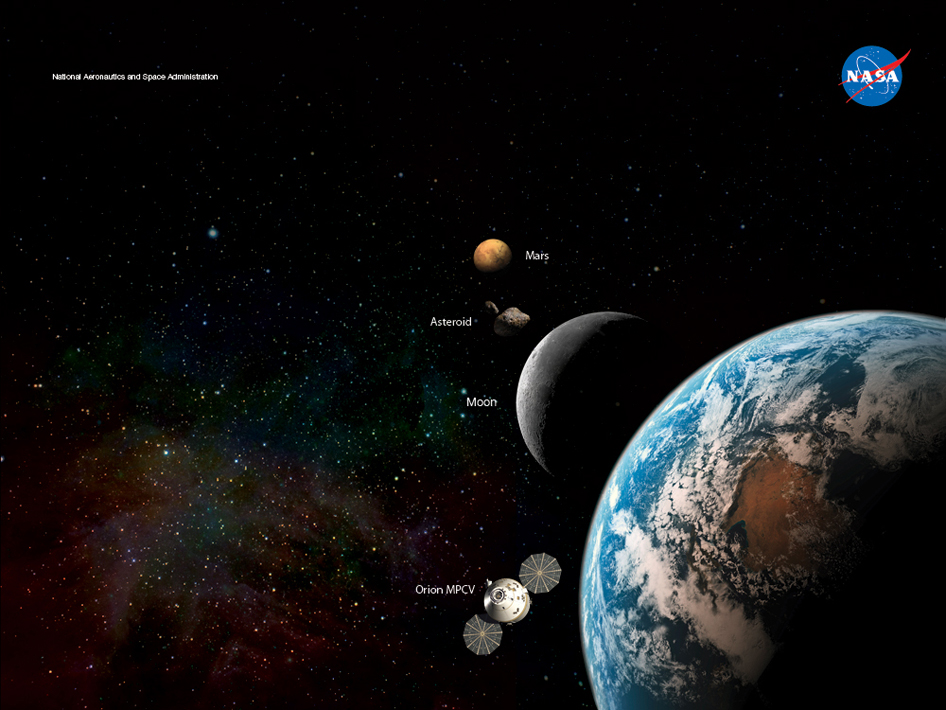
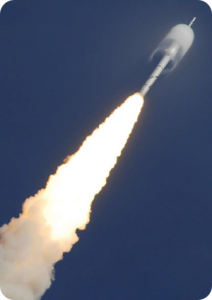
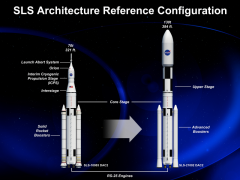
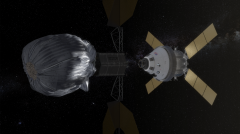
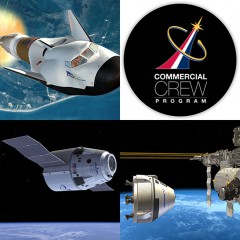
No comments:
Post a Comment